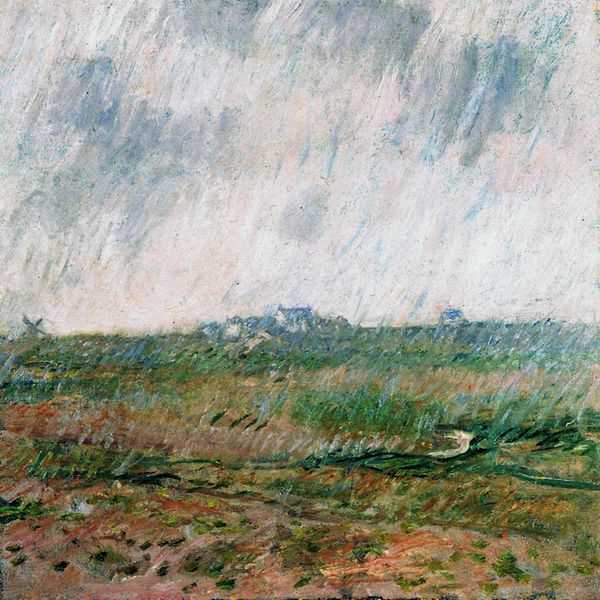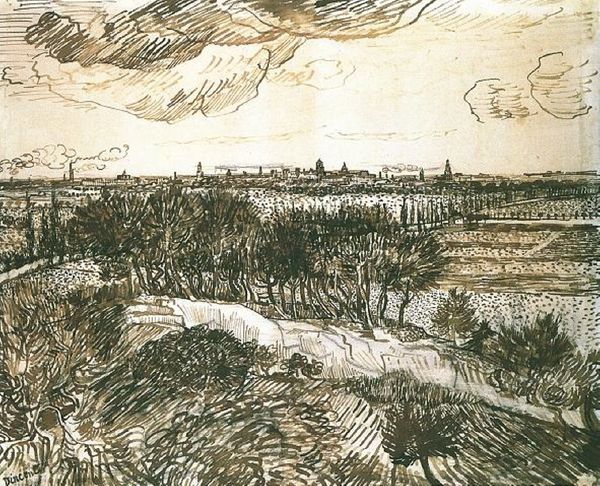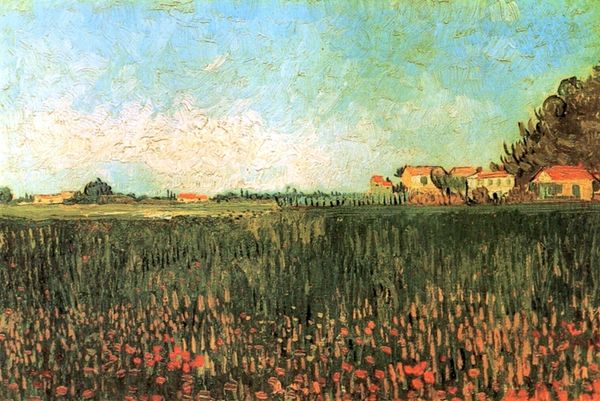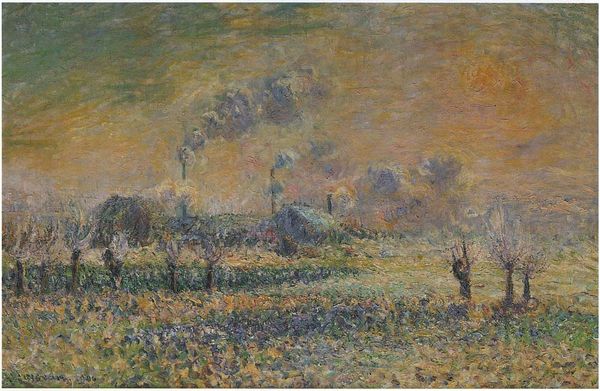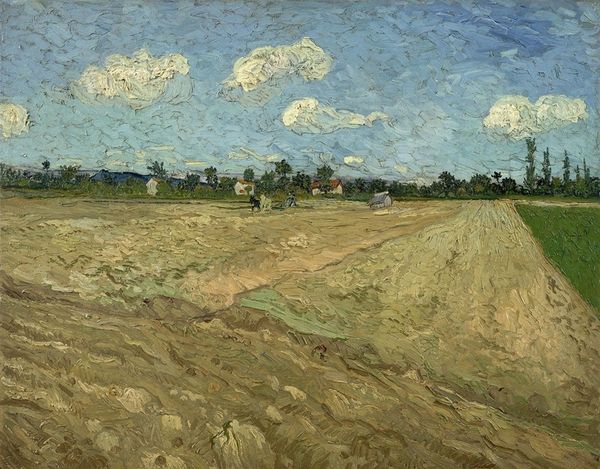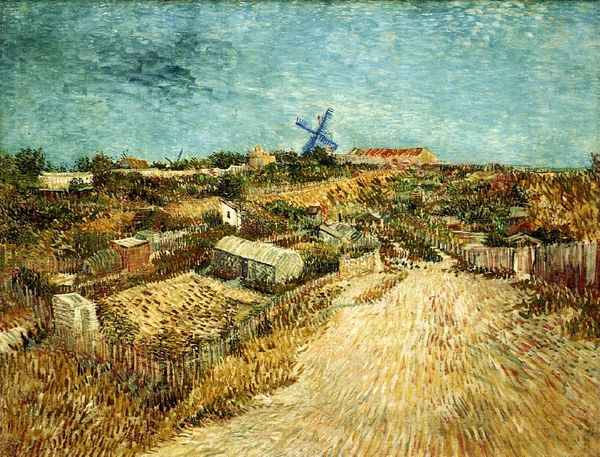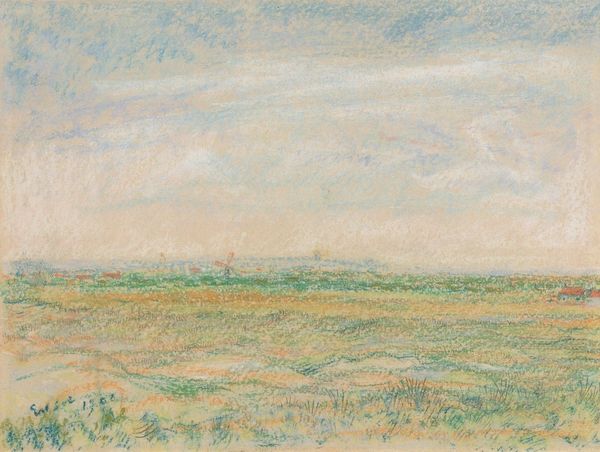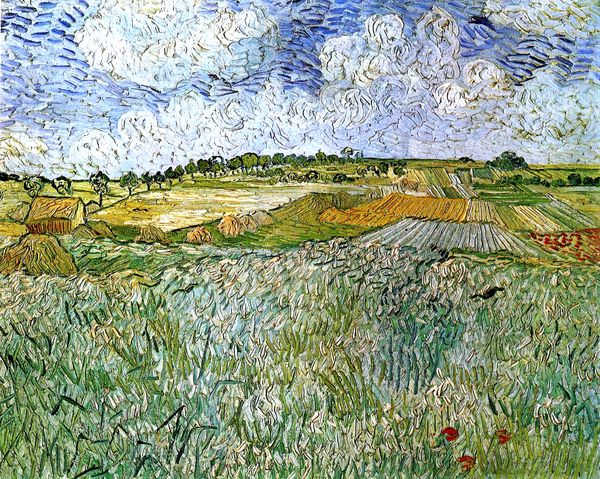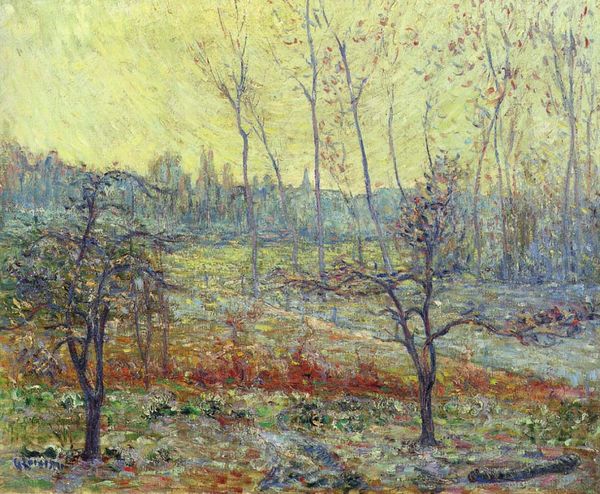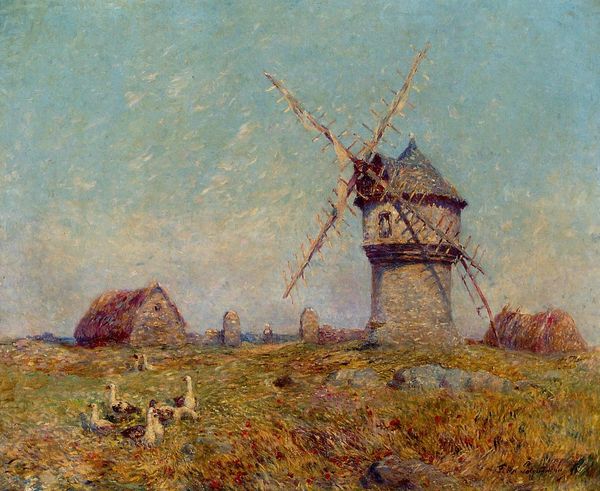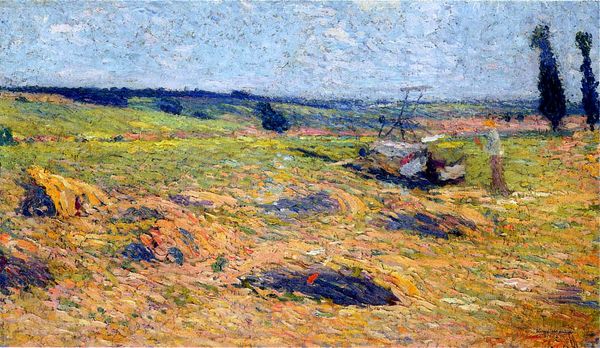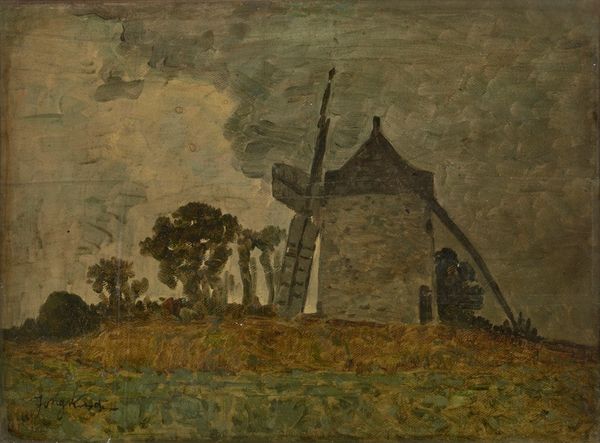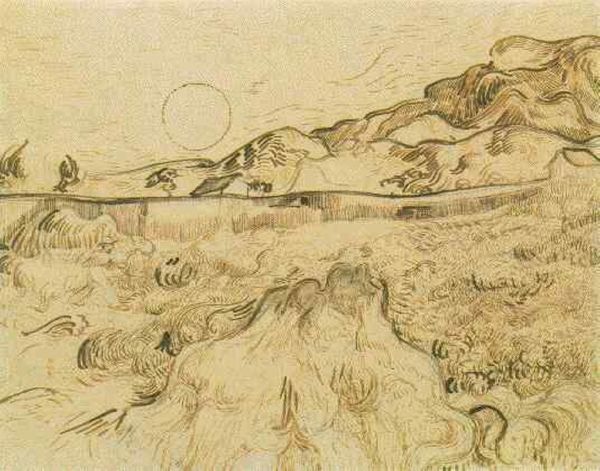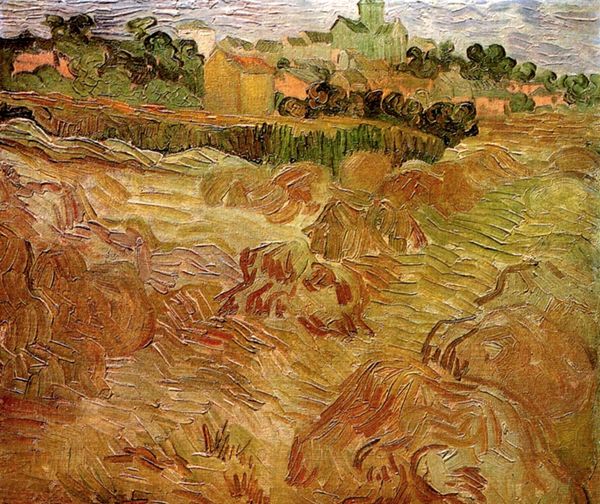
painting, oil-paint
#
painting
#
impressionism
#
oil-paint
#
landscape
#
impressionist landscape
#
possibly oil pastel
#
genre-painting
#
post-impressionism
Dimensions: 72 x 92 cm
Copyright: Public domain
Vincent van Gogh painted "The Plough and the Harrow (after Millet)" during his stay at the Saint-Paul-de-Mausole asylum in Saint-Rémy. It’s part of a series where Van Gogh reinterprets works by his favorite artist, Jean-François Millet. Van Gogh deeply identified with Millet's depictions of peasant life, seeing in them a profound connection to the land and the dignity of labor. In this work, the abandoned farming equipment evokes themes of labor, land, and the human condition. The swirling brushstrokes and heightened colors, so characteristic of Van Gogh, infuse Millet's serene scene with a sense of emotional intensity, conveying a feeling of both the beauty and the hardship inherent in rural existence. Van Gogh once said that he wanted to paint "men and women with that something of the eternal which the halo used to symbolize." "The Plough and the Harrow (after Millet)" embodies this sentiment, transforming a simple scene of agricultural life into a powerful statement about humanity's relationship to nature and the cycles of life.
Comments
No comments
Be the first to comment and join the conversation on the ultimate creative platform.
